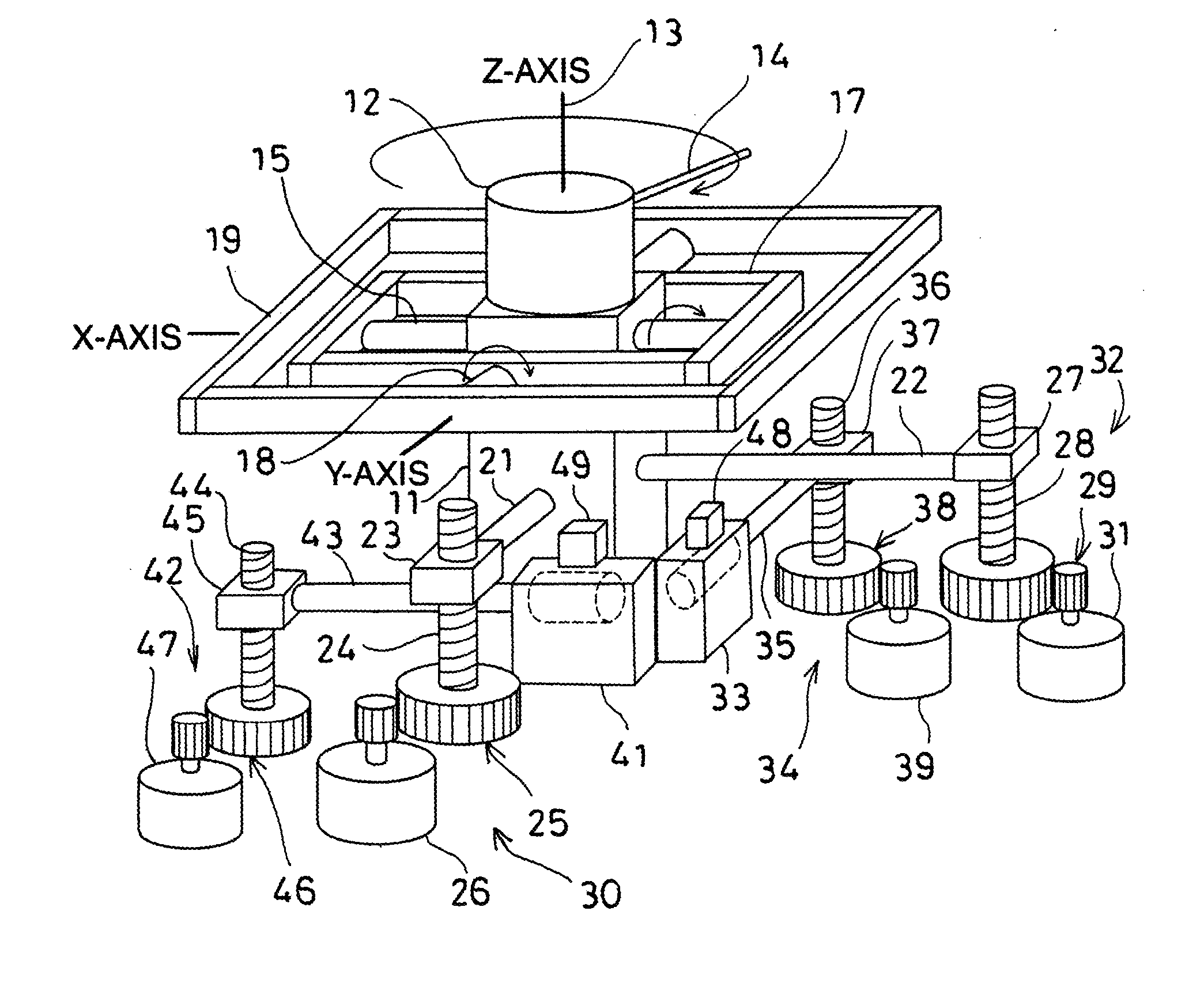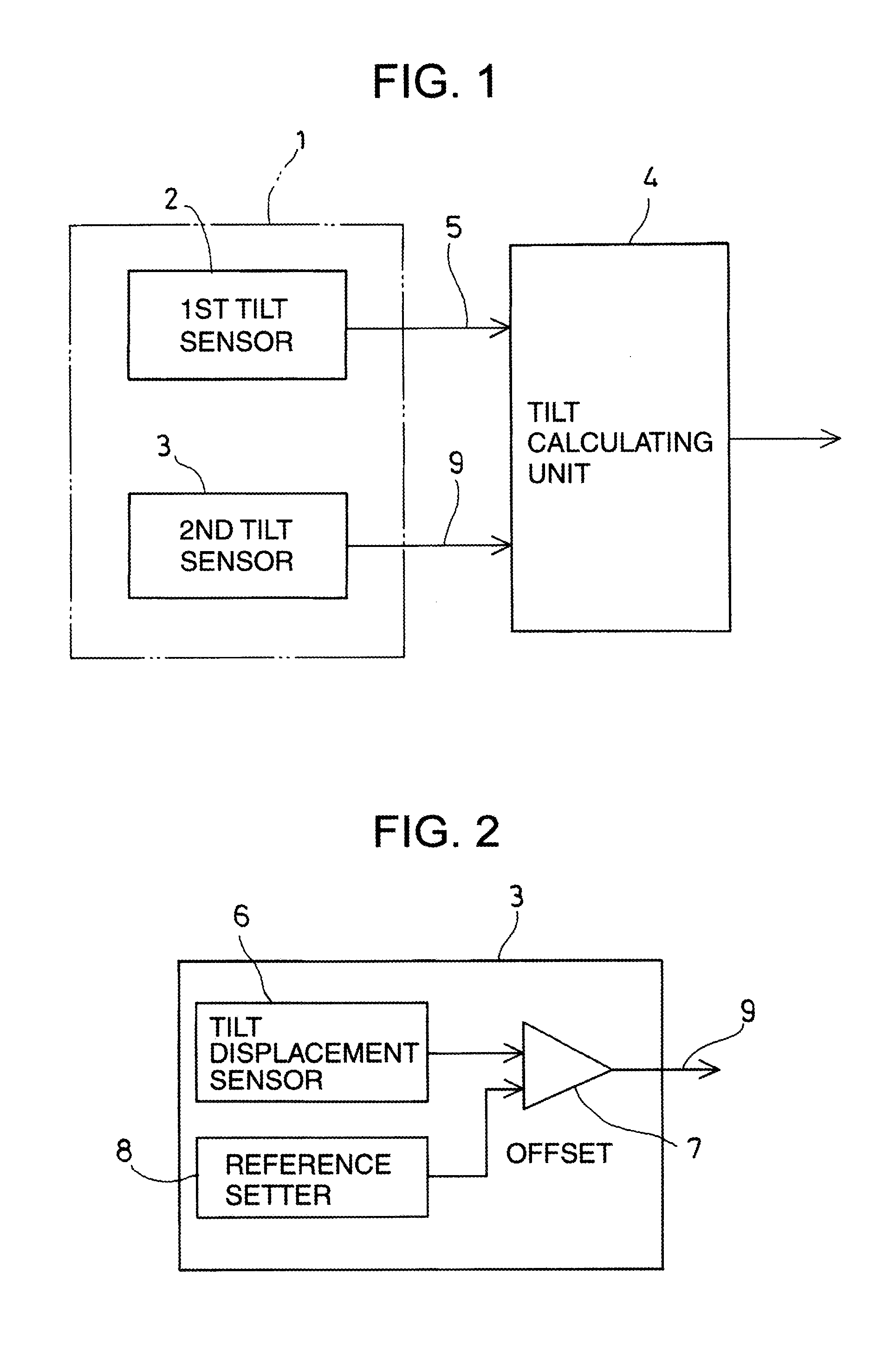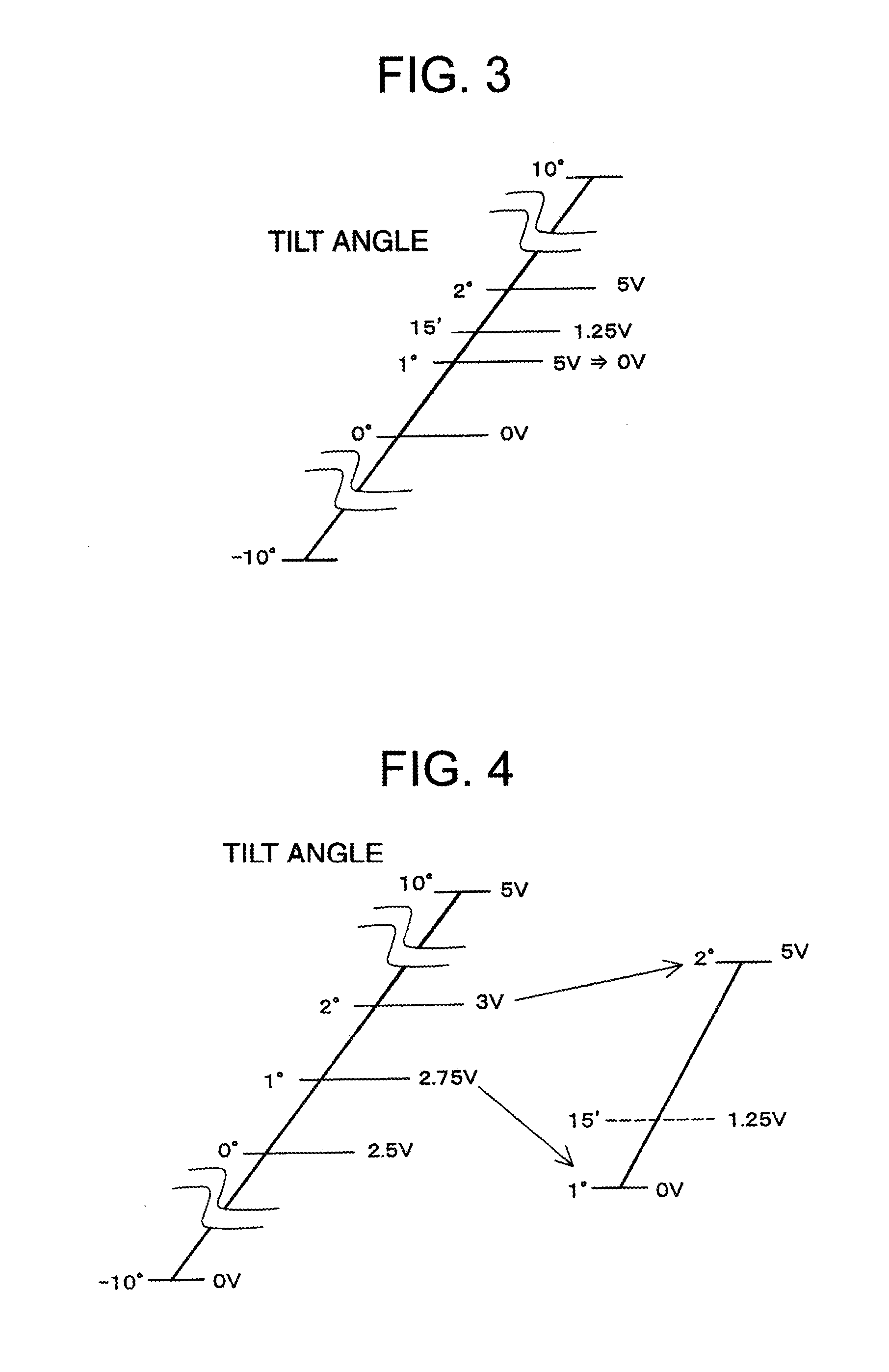Tilt Detecting Device And Laser Surveying Instrument
a detection device and detecting technology, applied in the field of tilt detection devices and laser surveying instruments, can solve the problems of low accuracy, complicated encoder mechanism, and low resolution of gravity sensors, and achieve the effect of high accuracy and low accuracy
- Summary
- Abstract
- Description
- Claims
- Application Information
AI Technical Summary
Benefits of technology
Problems solved by technology
Method used
Image
Examples
first embodiment
[0060]Next, referring FIG. 3, description will be given on operation of tilt detection by the tilt detecting device 1 according to the
[0061]In the first embodiment, a reference voltage (offset voltage) to be applied to the amplifier 7 is set so that output voltage from the amplifier 7 at every predetermined angle is to be 0 V every time an angle detected by the tilt displacement sensor 6 is beyond the predetermined angle.
[0062]For instance, as shown in FIG. 3, it is assumed that the tilt displacement sensor 6 detects the tilting in the range of −10° to +10°, and that output voltage of the amplifier 7 is 5 V at maximum (i.e. dynamic range is 5 V at maximum). Each time the second tilt sensor 3 detects 1°, the reference setter 8 sets the reference voltage to be applied to the amplifier 7 so that the output voltage from the amplifier 7 will be 0 V.
[0063]For instance, when an angle of 1° 15′ is to be detected, the reference voltage to be applied to the amplifier 7 is set so that output v...
second embodiment
[0071]In the second embodiment, the gain for coarse detection and the gain for finer detection are selectively applied to the amplifier 7. As a result, the tilt angle can be detected at high speed and with high accuracy.
[0072]Now, referring to FIG. 4 and FIG. 5, description will be given on operation of the second embodiment.
[0073]First, the gain for coarse detection is applied on the amplifier 7 by the gain setter 10. When the gain for coarse detection is applied, output voltage from the amplifier 7 will be in the range of 0 V to 5 V in full scale (i.e. the range of −10° to +10°). The reference voltage to be applied to the amplifier 7 is set by the reference setter 8 so that the output voltage from the amplifier 7 at a position where the horizontality is detected by the first tilt sensor 2 will be 2.5 V. By this procedure, the reference position is offset.
[0074]For instance, when a tilt angle of 1° 15′ with respect to the horizontality is to be detected, an angle of 1° is detected ...
third embodiment
[0079]FIG. 6 shows a In FIG. 6, the same component as shown in FIG. 1 is referred by the same symbol, and detailed description is not given here.
[0080]In the third embodiment, a plurality of the first tilt sensors 2 with high resolution are provided. In the figure, three tilt sensors are shown: a first tilt sensor 2a, a first tilt sensor 2b, and a first tilt sensor 2c.
[0081]When it is supposed that the tilt displacement sensor 6 is in full scale (i.e. in the range of −10° to +10°), a first tilt sensor 2b is installed so that the first tilt sensor 2b can detect the horizontality, and another first tilt sensor 2a is installed in a condition where the first tilt sensor 2a is tilted at an angle of −5° when the first tilt sensor 2b detects the horizontality, and the other first tilt sensor 2c is installed in a condition where the first tilt sensor 2c is tilted at an angle of +5° and where the first tilt sensor 2b detects the horizontality.
[0082]That is, the first tilt sensors 2a, 2b an...
PUM
 Login to View More
Login to View More Abstract
Description
Claims
Application Information
 Login to View More
Login to View More - R&D
- Intellectual Property
- Life Sciences
- Materials
- Tech Scout
- Unparalleled Data Quality
- Higher Quality Content
- 60% Fewer Hallucinations
Browse by: Latest US Patents, China's latest patents, Technical Efficacy Thesaurus, Application Domain, Technology Topic, Popular Technical Reports.
© 2025 PatSnap. All rights reserved.Legal|Privacy policy|Modern Slavery Act Transparency Statement|Sitemap|About US| Contact US: help@patsnap.com



